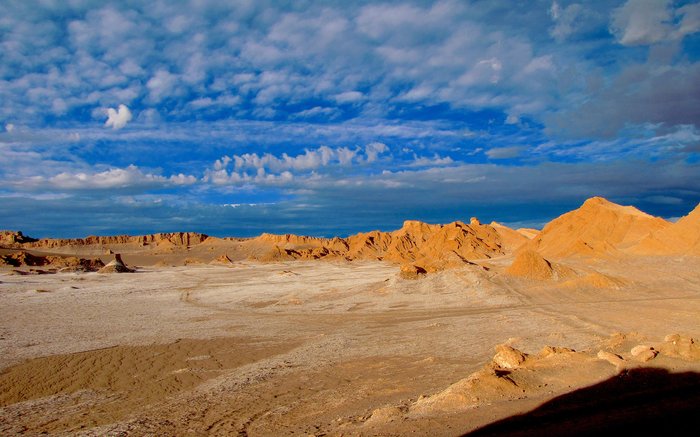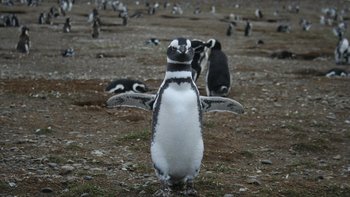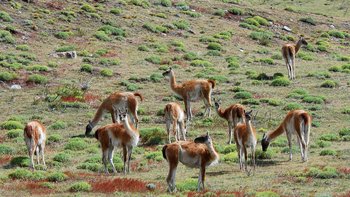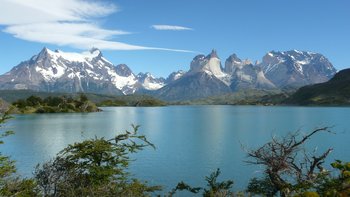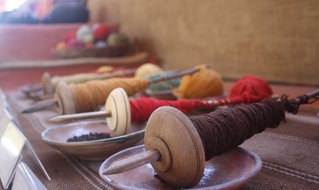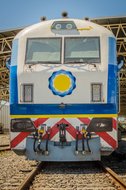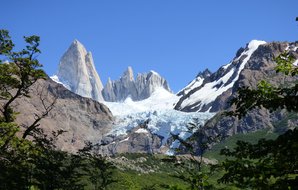Travel in Chile from the Atacama Desert to Cape Horn - INTI Tours
On the road in the "geographical tapeworm
Chile - its geographical location alone makes the country unique. It stretches like a long ribbon along the Pacific coast and is bordered in the east by the peaks of the Andes Mountains. On average, this distance is just 180 km. The north-south extension, on the other hand, stretches for almost 4,300 kilometres between the border triangle with Peru and Bolivia in the north and Cape Horn at the southernmost point of the American subcontinent. This roughly corresponds to the distance between Denmark and the Sahara in Africa. Travelling in Chile takes you from the Atacama Desert to Cape Horn. Chile is unique and one of the most fascinating countries on earth.In the north, the Atacama is the driest desert on earth, in the central region almost all fruits and vegetables thrive, and in the south subarctic forests, glaciers and fjords spread out. Picture-perfect volcanic cones are strung along the entire length of the country like a string of pearls. And its location on the Pacific Ocean gives Chile a cuisine dominated by fish and seafood. The mighty condor circles above the Andean regions and on the Patagonian coast!
Set out and discover the fantastic diversity in the "land at the end of the world".
Welcome to Chile!
Country information Absolutely worth seeing Facts and figures Travel in Chile Addresses
Our types of travel in Chile
Beispiele für individuelle Wunschreisen in Chile
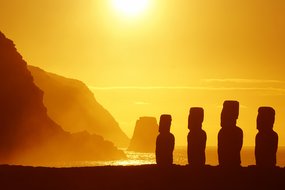
Chile individual: Atacama Desert, Wine and Easter Island
Experience the vastness of the Patagonian steppe, explore the wild beauty of the mountains at the "end of the world" and relax on breathtaking beaches on the Atlantic coast.
16 days Individualreise 1 up to 6 travellers
upon request
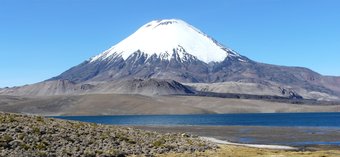
Chile en coche de alquiler por la Panamericana
Enjoy incomparable landscapes on this rental car tour along the Panamericana. Journeys from the coast to the highlands, the Lauca National Park, the Atacama Desert, the Pacific coastal landscape of Chile or the UNESCO World Heritage Site Isla Chiloé.
21 days Rundreise 2 up to 4 travellers
upon request
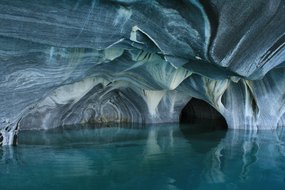
Individual tour through Chile, Argentina and Brazil
Experience the vastness of the Patagonian steppe, explore the wild beauty of the mountains at the "end of the world" and relax on breathtaking beaches on the Atlantic coast.
22 days Individualreise 2 up to 6 travellers
upon request
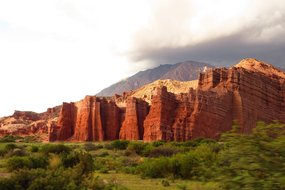
Individual tour through Argentina, Chile and Bolivia
Reisen Sie von den Iguazú-Wasserfällen in tropischen Regionen über die farbigen Wüstenlandschaften in Nordwestargentinien ins faszinierende wilde Patagonien sowie in die liebliche Seen- und Vulkanlandschaft Chiles bis hinauf in die Atacamawüste.
52 days Individualreise 2 up to 6 travellers
upon request
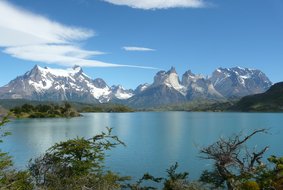
Individual tour through Chile, Argentina and Brazil
Experience the vastness of the Patagonian steppe, explore the wild beauty of the mountains at the "end of the world" and relax on breathtaking beaches on the Atlantic coast.
25 days Individualreise 2 up to 6 travellers
upon request
You might like this too...
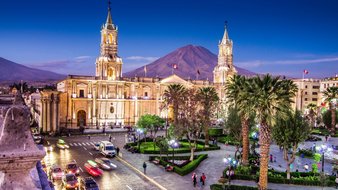
Peru Experience the Land of the Incas - Option I
The trip "The Land of the Incas - Varinate I" is suitable for those who visit Peru for the first time. It dives deep into the region of the Incas around Cuzco and the Sacred Valley.
12 days Gruppenreise 2 up to 12 travellers
upon request
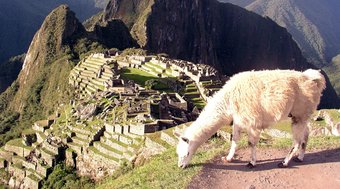
Peru Experience the Land of the Incas - Option II
The trip "The Land of the Incas - Variant II" is suitable for those who visit Peru for the first time. Two days Machu Picchu lets you intensively experience this highlight of all Inca sites.
12 days Gruppenreise 2 up to 12 travellers
upon request
Country information on CHILE: „The geographical tapeworm“
Chile is often called the "geographical tapeworm" or the "towel of South America". The word Chile means - translated from the Aymara language - "where the world ends". From Arica on Chile's northern border to Cape Horn, Chile is 4,300 kilometres long, which corresponds to a distance from southern Norway to the southern edge of the Sahara. This is almost 40 degrees of latitude. With an area of 756,627 square kilometres, Chile is not one of SA's very large states. On average, the country is just 180 kilometres wide. The widest point is near Antofagasta and measures 355 kilometres. Exactly at this widest point of the country, there is also the strongest curvature of the earth's surface over the shortest distance! The so-called deep-sea trench off the Chilean coast in the Pacific Ocean is 8,050 metres deep off the coastal city of Antofagasta! Figuratively speaking, this means that you could sink the entire Andes mountain range into it without even a mountain peak peeking out of the sea. Due to the plate tectonics off the coast, around 500 earthquakes are measured in Chile every year. It is said that Chile is the country with the most volcanoes! They speak of the so-called fire belt of South America along the Pacific coast from Ecuador, Peru to Chile with 2,085 volcanoes, of which 55 are considered active! Chile itself has around 500 volcanoes, of which around 20 are said to be active. The dormant "Ojos de Salado" is the highest volcano on earth at 6,893 metres above sea level, and is also located in Chile. The highest mountain in the Chilean coastal cordillera is "Mt. Vicuna Mackenna" at 3,114 metres. - What do all these facts and figures tell us? Chile is a country of extremes. It combines one of the driest deserts on earth in the north with one of the rainiest regions in the south with fjords, glaciers and subarctic rainforests.
Capital Santiago de Chile:
In 1540, the Spanish conquistador Pedro de Valdívia moved south from Peru and easily subdued the Indians of the middle valley along today's Rio Mapocho. After his extremely arduous journey through the forbidding Atacama Desert, he had now reached the fertile river plain. This is how Valdívia founded his city Santiago de Chile. Santiago lies at an altitude of between 500 and 700 metres above sea level. The Andes behind Santiago are between 5,000 and 5,500 metres high. In its founding years as a Spanish city, Santiago was a total of 7 by 7 city blocks. Today, the city has 37 districts, each with its own mayor, and covers 35 kilometres from north to south and 40 kilometres from west to east. A good 5.2 million people live in the urban settlement area, and well over 7 million in the metropolitan region. This means that almost 45 % of all Chileans live in or near the capital. Nobody can avoid Santiago de Chile: the city is the undisputed political centre of Chile, even though the Chilean National Congress meets in Valparaíso. Santiago is the most important traffic hub as well as the most important economic, media and cultural centre of Chile. Universities, colleges, museums and Chile's most important companies all have their headquarters in Santiago, as do many foreign branches. The city has a major smog problem due to its basin location with the Andes to the east and the coastal cordillera to the west, as well as cross chains to the north and south of the city. Otherwise, the climate in the capital region is comparable to the Mediterranean, which many Europeans appreciate.
Absolutely worth seeing:
- The best view of the city, all the way to the Andes, is from Cerro San Cristóbal. It rises about 300 metres above the city and can be reached by cogwheel railway, cable car, on foot and by car.
- A stroll through the small old town centre of Santiago with the Plaza de Armas, where the cathedral and the beautiful historic post office stand. Not far away is La Moneda Palace, the official seat of the Chilean President. The San Franciso Church is the oldest church in Santiago, or even the oldest colonial building in Chile, and was consecrated in 1622.
- The Mercado Central houses the city market and several restaurants in a wonderful iron construction.
- Cerro Santa Lucía is easy to walk up and offers a beautiful panoramic view of the city centre.
- The Chilean Art Museum in the Museo de Bellas Artes.
- The Club Hipico racecourse was built at the end of the 19th/beginning of the 20th century on the Parisian model and is still in operation.
- Large green and recreational area Parque O'Higgins of 75 hectares in size in the middle of the city.
- Pueblo Artesanal los Dominicos - a Dominican order once lived here. Today, a number of artists and craftsmen offer their products in the winding little streets and you can even watch them being made.
- Day trip to wine wineries in Valle Maipu.
- Day trip to the coast to Valparaiso and Vina del Mar and to the Pablo Neruda House.
Chile's North:
Chile's north is one of the driest and most inhospitable regions on earth. A rugged cliff, often shrouded in fog, borders the Pacific Ocean bubbling with life. The nutrient-rich cold Humboldt Current from Antarctica brings food for fish, seabirds and marine mammals, so the barren coast is teeming with life. Pelicans, Humboldt penguins, cormorants, boobies, oystercatchers and sea lions feel at home here and can be wonderfully observed. The high plateau of the Atacama Desert stretches from the Pacific coast eastwards to the Andes and is repeatedly intersected by impressive transverse valleys created by the river courses over millions of years. Relics of the indigenous people can still be found in the form of petroglyphs and geoglyphs in the desert. The region is rich in mineral resources - in the past as well as today. In the middle of the desert you can find ruins of houses and factories as well as cemeteries from the saltpetre era at the end of the 19th century. Regular ghost towns tell of the past, while former shipping ports are today's coastal towns such as Iquique and Antofagasta. Currently, Chuquicamata is the world's largest open-pit copper mine and the backbone of Chile's economy. Curving roads wind up into the Andes, mighty volcanoes rise, lagoons of different colours spread out - often a landscape as if painted and out of this world. Oasis towns like San Pedro de Atacama below the Andes far up in Chile's north or river oases like in the Valle de Elqui with nearby observatories and spectacular pass roads are waiting to be discovered.
Absolutely worth seeing:
- From Arica, in the very north of Chile, the Lauca National Park high in the Andes is easily accessible. The drive leads from sea level upwards in countless hairpin bends, eventually passing from the dust-dry desert into ever greener countryside with cacti, Andean vegetation, small camels and idyllic villages. Lauca National Park is famous for its double volcanoes Parinacota at 6,342 m.a.s.l. and Pomerape at 6,282 m.a.s.l. as well as its lagoons and abundance of animals. Lago Chungara at 4,500 metres is said to be the highest lake on earth. A further trip to La Paz in Bolivia is easily possible and scenically a pleasure. The Salar de Surire is also easily accessible.
- Iquique developed into an important seaport during the saltpetre heyday. Even today, buildings from that time can be admired in the city directly on the Pacific. A look back into history is provided by the two ghost towns about 50 km east of the city. Oficina Humberstone and Oficina Santa-Laura were old saltpetre works that are now UNESCO World Heritage Sites.
- The world's largest open copper mine, Chuquicamata, is located near Calama. It can be visited by appointment. Near Calama are the Chiu Chiu oasis and the Lasana archaeological site in the middle of the Atacama Desert.
- Below the impressive volcanic backdrop lies the oasis town of San Pedro de Atacma. It is a suitable starting point for many excursions into the surrounding area: Valle del Muerte and Valle de la Luna - the Moon Valley with its gypsum and salt crystals; El Tatio, the highest geyser field on earth; Salar de Atacama with its salt lagoons and flamingo colonies; Puritama Natural Springs; excursions into the Andean highlands in the border region with Argentina with spectacular scenery.
- From San Pedro de Atacama, a tour to Bolivia to the Lagunas Verde and Colorada and to the Salar de Uyuni is also an option.
- There are a few beautiful stretches of coast near the mining town of Copiapó. Chile is not necessarily a bathing paradise, but the beaches of Bahía Inglesa or Playa la Virgen are inviting. In the Pan de Azúcar National Park, amazing vegetation and even a number of wild animals can survive due to the coastal fog. The Nevado Tres Cruzes National Park and excursions to the mountain lakes Laguna Verde, Laguna Santa Rosa and Laguna Negro Francisco are worthwhile.
- For mountaineers, the volcano Ojos del Salado is an attraction - at 6,893 metres above sea level, it is considered the highest volcano on earth.
- From La Serena, the pretty Valle de Elqui invites wine lovers. South of La Serena, on the Pacific coast, lies the species-rich Bosque de Fray Jorge National Park. Even further south, the La Silla Observatory at an altitude of 2,400 metres can be visited by appointment. It is the first observatory of the European Southern Observatory in Chile.
Central Chile:
Central Chile has always been the country's fertile garden. It is the most densely populated region of Chile and the capital Santiago, the important port city of Valparaíso and the recreational areas with their beaches around Viña del Mar and Reñacas are also located here. Today, the globalised world of the 21st century exists side by side with deeply rooted traditions in this region. The mountains are home to world-class ski resorts, and the valleys produce some of the best wines in the world.
Absolutely worth seeing:
- Santiago, Chile's capital.
- The picturesque coastal town of Valparaiso - UNESCO World Heritage Site with countless staircases, ancient cable cars and fantastic viewpoints.
- Wine tour to the Valle de Maipo with visits to wineries
- Trip to the Andes in the Cajón del Maipo
- Into the Andes to the Portillo ski resort to the Laguna Inka - the onward journey to Argentina is also possible.
- From Santiago de Chile you can visit the Easter Island Rapa Nui as well as the lonely Robinsón Crusoe Island!
Chile's Little South:
Chile's so-called "little south" is fertile, has a beautiful coastline where clear cold freshwater rivers from the Andes pour into the Pacific. On a clear day, the view to the east shows a picture-book landscape with snow peaks and volcanic cones rising above a hilly lush green area with wonderful lakes. In the southern part, dairy farming dominates due to the abundant rain and there are fat cows on fat pastures. It was originally one of the main habitats of the Mapuche people, who successfully resisted their capture during the Inca period and also defied the Spanish conquerors for a long time. Mapuche still live in the region today, their main settlement area is around Temuco. Here you can still experience the typical instruments, the unique silver jewellery and the local cuisine of the Mapuche. Today, however, you can also find "Kuchenes" in the Chilean Lake District, small wooden houses and churches with shingle roofs and front gardens that inevitably remind you of Germany. In fact, in 1848 Bernardo Eunom Philippe recruited potential emigrants for Chile on behalf of the Chilean government in German-speaking countries. When they arrived, there was nothing but virgin forest between the Andes and the Pacific, and the immigrants literally had to reclaim their new land. Puerto Montt was founded in 1852, Puerto Varas in 1854 and Frutillar in 1856. Frutillar resembles a large open-air museum, especially in the Bajo district on Lake Llanquihue. In smaller villages, manual labour and work with ox teams are still common. There are currently said to be around 200,000 Chileans of German origin living in the area. South of the Chilean Lake District, the coastal cordillera drops into the sea at Puerto Montt, creating an archipelago of countless islands and islets to the south. The region is popular with holidaymakers on the Pacific and around the lakes, and with hikers and adventurers in the direction of the mountains.
Absolutely worth seeing:
- Conguillio National Park boasts impressive ancient araucaria forests and a unique volcanic landscape. The oldest araucaria is said to be 1,800 years old!
- Pucón has developed into a holiday resort. It is an ideal starting point for many activities: Visit and hike in the Huerquehue National Park - climb the Villarica Volcano - rafting tours on the rivers of the region - horseback riding - hiking - mountaineering on the Sollipulli - thermal baths and much more.
- Osorno, Puerto Montt and Frutillar are starting points for the Puyehue National Park with its lakes, forests and mountains; for Lago Llanquihue; for climbing Osorno Volcano.
- The so-called Siete Lagos route takes you to the lakes of Pellaifa, Calafquén, Pullinque, Panguipulli, Pirihueico, Neltume and Riñue, which are located in close proximity to each other in the middle of the Andes. Roam through the nature surrounding them with volcanoes, glaciers, rivers, waterfalls and native flora and fauna.
- In the Territorio Arauco - the ancestral territory of the Mapuche - you can go in search of traces of this special culture. Lago Lanalhue is worth a visit.
- Chillán is especially popular in winter as an attractive ski centre with great slopes and warm thermal springs.
- The Itata Valley has become a special wine-growing area, especially organically grown wines from small wineries are produced here.
- Puerto Montt offers delicious seafood. It is the starting point for the mystical island of Chiloé, for a boat trip south through the fjord landscape of southern Chile and to the San Rafael glacier, to the Alerce Andino National Park with its ancient larks and to the legendary Carretera Austral.
Chile's Patagonia:
The so-called Carretera Austral is considered the world's unique scenic route of Patagonia. In the extreme south of Chile, the road winds over 1,200 kilometres through enchanting nature. It was once initiated under General Augusto Pinochet for military purposes and to open up the previously completely isolated and cut-off stretch of land with a huge construction effort. Rocks had to be blasted, wooden bridges built and small ferry connections established. Today, some sections have already been widened, asphalted and wooden bridges and short ferry connections replaced by solid bridges. The Carretera Austral now connects Puerto Montt continuously with Villa O'Higgins, and the goal is an inner-Chilean connection to Puerto Natales. Along the Carretera Austral you will find an extraordinary variety of landscapes: subarctic rainforest all the way to the sea, countless fjords and channels, crystal-clear rivers, mountains covered with glaciers. At present, you still have to make the detour via Argentina if you want to get to the extreme south of Chile to Puerto Natales, Punta Arenas or even to the Chilean part of Tierra del Fuego. The climate of southern Chile is wet, cold and inhospitable.
Absolutely worth seeing
- You can go rafting on the Futaleufú River, one of the most famous rafting rivers in the world.
- The Pumalín Park invites you to go hiking, canyoning, horseback riding and mountain climbing. The vegetation and wildlife are unique.
- Puyuhuapi is a true German pioneer village, founded and built by four Sudeten Germans in 1935 in complete wilderness on a fjord in the Aisén region. The settlement is the starting point to the luxurious Termas de Puyuhuapi as well as to the Queulat National Park with hiking possibilities to its "hanging glacier".
- Chile's largest lake, Lago General Carrera, shines in turquoise blue. Starting from Puerto Rio Tranquilo, you can explore the unique marble caves by boat or kayak. The Capillas de Mármol - Marble Cathedrals - are three beautiful cave formations on the edge of the lake: the Cathedral, the Chapel and the Cave.
- Day trip from Puerto Chacabuco to Laguna San Rafael: The San Rafael glacier is the closest glacier to the equator that reaches the sea. It pushes down from the Northern Patagonian Ice Field into a Pacific fjord. It stretches for about 120 kilometres and is an impressive 60 metres high at its front and about 3 kilometres long. Huge icebergs in all shades of blue float in the lagoon - a highlight of any trip to Chile.
- Torres del Paine National Park is located about 140 km north of Puerto Natales and covers 2,420 km². It is criss-crossed by mountains, glaciers, fjords and large lakes. The so-called towers - the "Torres del Paine" - are the landmark of the national park. These are three needle-like granite mountains that are between 2,600 and 2,850 m high. The highest mountain in the national park is Cerro Paine Grande at 3,050 m. Large parts of the national park are glaciated. The most famous glacier is the Grey Glacier, which calves into Lago Grey. In the national park, you can take simple walks as well as day hikes or a complete circumnavigation of the entire Paine massif over several days. Boat and kayak tours are also available. The flora and fauna are unique.
- From Puerto Natales you can take a boat trip to the Balmaceda and Serrano glaciers. Or marvel at the discovery of a giant sloth in the Cueva del Milodón.
- Punta Arenas is located on the Strait of Magellan, a tour and a visit to the cemetery are worthwhile. Excursions take you to Fuerte Bulnes south of Punta Arenas, to Isla Magdalena with its Magellanic penguin colonies or to Tierra del Fuego to see the colony of king penguins.
- Punta Arenas is also the starting point for a 3-4 day cruise to Ushuaia on Tierra del Fuego. This cruise sails through the fjords, past glaciers and mountains and makes various stops for animal observation and at Cape Horn. You can also visit the southernmost city of Puerto Williams south of the Beagle Channel.
Facts and figures Chile:
Land area: 756,627 sq km
Population: 17.6 million - 89% whites and mestizos, 11% people of indigenous descent
Capital: Santiago de Chile with 52 million inhabitants, metropolitan region a good 7 million
Highest mountain: at 6,893 metres, Ojos de Salado - highest volcano on earth
Form of government: Presidential democracy
History: In 1535 Diego de Almagro reached what is now Chile from Peru, but did not find the riches he had hoped for and returned disappointed. The first permanent European settlement was Santiago, founded in 1541 by Pedro de Valdivia. Since 1542, Chile had been part of the Spanish Viceroyalty of Peru. On 18 September 1810, Chile became an autonomous province within the Spanish Kingdom. This date is celebrated in Chile as the beginning of independence. Shortly afterwards, Chile declared its secession from Spain and the monarchy. In the Saltpetre War of 1879 to 1884, Chile occupied the Atacama Desert, which until then had belonged to the neighbouring countries of Peru and Bolivia, Lima and parts of the Pacific coast of Peru. In the peace treaty of 1904 between Chile and Bolivia, Bolivia handed over to Chile its free access to the Pacific. eru handed over to Chile in the Treaty of Ancón the present-day regions of Arica, Parinacota and Tarapacá as reparations. The left-wing electoral alliance Unidad Popular emerged as the strongest force from the 1970 elections with 37% of the vote and Salvador Allende was elected president. On 11 September 1973, there was a bloody military coup against the government. President Allende died and hundreds of his supporters were killed, thousands were imprisoned. All state institutions throughout Chile were occupied by the military within hours. General Augusto Pinochet took power as president of a junta. In 1988, a referendum was held in which a majority of 55% opposed Pinochet's continuing in office. In 1989, the first free elections after 15 years of dictatorship took place.
Economy: Chile is one of the leading economies in Latin America and one of the largest producers of raw materials. It has the largest known copper deposits in the world, accounting for about 40 percent of the total. Chile is home to the world's largest copper mines, Chuquicamata, El Teniente and Escondida. Various precious metals and especially saltpetre made Chile rich as early as the 19th century. At the moment, one of the largest gold mines in the world is being planned with the Pascua-Lama project, whereby great environmental damage is feared. Furthermore, Chile is currently the world's largest producer of lithium.
Currency: Chilean peso
Language: Spanish
Festivals: Every year at the end of January and beginning of February, the Tapati Rapa Nui festival takes place on Easter Island with dances and competitions.
On the third weekend in February, the Costumbrista Chilote festival is celebrated on Chiloé Island. Weaving, sheep shearing, oxen driving, culinary delights are offered.
The grape harvest in Chile is at the end of March. The grape harvest festival features music, dancing, grape stomping competitions and, of course, lots of wine.
In the Andean highlands, Chile's patron saint, the Virgin Carmen, is celebrated from 12 to 18 June in the small village of La Tirana with dances in traditional colourful costumes.
The entire Holy Week is celebrated as Semana Santa. The holiday is ushered in with processions depicting the Stations of the Cross. On Easter Saturday, the symbolic burning of a Judas doll takes place in Valparaíso.
Chile's indigenous culture follows an ancient calendar that celebrates New Year on 24 June. This day is winter solstice in the southern hemisphere. According to tradition, it celebrates the cycle of life, gives thanks for the harvest and heralds a period of renewal and rebirth. The festival is celebrated in different ways by the different tribes. For example, the Mapuche festival of the We Tripantu is associated with the return of the sun. Visitors can attend these tradition-steeped celebrations in the rural regions of southern Chile, such as the city of Temuco.
Chile celebrates its independence from Spain every year on 18 September. The Fiestas Patrias include parades, music, dances and authentic Chilean food. Traditional events also include rodeos, where two huasos try to catch a calf in an arena.
Travelling in Chile:
Entry requirement: Travel documents must be valid for at least six months at the time of entry. No visa is required for a short-term stay for tourism or visiting purposes. On entry, a "Tarjeta de Turismo" (tourist card) is issued free of charge at the border, entitling the holder to a maximum stay of 90 days.
Vaccinations: No compulsory vaccinations are required for direct entry from Germany. Vaccinations against hepatitis A, hepatitis B, typhoid and rabies are recommended for long-term stays or special exposure.
Climate/travel time: Basically, the seasons in Chile are exactly the opposite of ours. You can travel to the northern regions all year round. For Patagonia, only the local summer months are suitable, i.e. November to March. During the South American summer holidays from Christmas until the end of February, the locals also love to travel. If you want it to be quieter, you should avoid this time.
Local time: During German winter time, Chile is four hours behind Germany. Chile also has daylight saving time, which is slightly longer than German summer time. Then the clocks are set forward one hour and the time difference is reduced to three hours.
Addresses:
Embassy of the Republic of Chile
Mohrenstraße 42
10117 Berlin
Tel: +49 (030) 72 620 35 / +49 (030) 72 6203 600
Fax: 49-30-726 203 603
http://www.echile.de/index.php/de/kontakt/5-botschaft-allgemein


